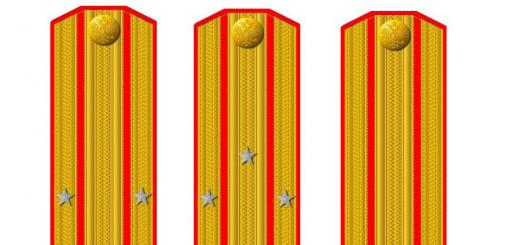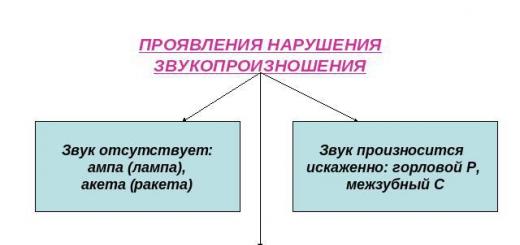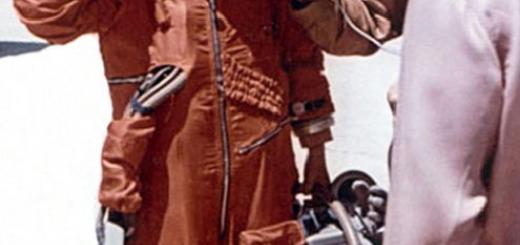Located on the banks of the Kotorosl River, 46 kilometers south of the regional center. The area of the settlement is 11 square kilometers.
General data and historical facts
The first mention of a settlement on the site of the modern city dates back to 1545.
In 1580, by decree of Ivan the Terrible, the village received the name Gavrilovsky Yam.
After the construction of the church at the end of the 18th century, the village was renamed Gavrilov-Yam.
In the 1870s, a textile manufactory was opened in the village, which ensured the rapid growth of the settlement.
In August 1922, by decree of the authorities, the village was transformed into an urban-type settlement.
In 1938, the workers' settlement received the status of a city with the former name Gavrilov-Yam.
In 1968, a large machine-building plant was put into operation in the city, which was an object of defense significance.
Industrial enterprises: Gavrilov-Yamsky Flax Mill, JSC GMZ "Agat", Gavrilov-Yamsky Bakery Plant, Gavrilov-Yamsky "Agropromtehsnab", JSC "Paints and Varnishes".
The telephone code of Gavrilov-Yama is 48534. The postal code is 152240.
Time
Climate and weather
A temperate continental climate prevails in Gavrilov-Yama.
Winters are moderately cold and long. Summer is warm and short.
The warmest month is July - average temperature is +18.7 degrees. The coldest month is February - the average temperature is -8.7 degrees.
The average annual precipitation is 645 mm.
Total population of Gavrilov-Yam for 2019-2020
Population data was obtained from the State Statistics Service. Graph of changes in the number of citizens over the past 10 years.

The total number of residents in 2019 was 17.8 thousand people.
The data from the graph shows a steady decline in the population from 18,534 people in 2007 to 17,792 people in 2019.
Attractions
1.Coachman Museum- the cultural institution was founded in 2005 in the city of Gavrilov-Yam. The museum's exposition is represented by various items related to the coachman's business.
2.St. Nicholas Church- The Orthodox Church was built with funds from the local population in 1798. In 1937, the church was closed, and its premises were used as gyms. In 1991, the temple was transferred to the Russian Orthodox Church, and reconstruction work began.
3.Gavrilov-Yamsky Museum of Local Lore- a cultural institution opened in 1998 that combines library and museum functions. The museum has 6 halls: the hall "Peasant life of the region", the hall "Military Glory", the hall "History of city-forming enterprises", the hall "History of the Soviet period", the hall "Flora and fauna of the region".
Transport
In Gavrilov-Yama there is a railway station of the same name, connecting the city with Semibratovo, Rostov, Yaroslavl, Kozmodemyansky.
Intracity transport is represented by buses and minibuses.
From the city bus station, buses regularly depart to Yaroslavl, Zayachiy Kholm, Shopsha, Ivanovo, Pestsovo.
The development of tourism in Gavrilov-Yam is carried out under the brand “Country of the Coachman”, therefore coachman museum can safely be called the main attraction of the city. It is located in the former outbuilding of the merchant Lokalov of the 19th century. A large collection of horse-drawn vehicles is presented here: sleighs, sledges, drags, as well as items from a coachman's everyday life. And, of course, guests can buy themselves a horseshoe for good luck.
A relatively new exhibition in Gavrilov-Yam, but extremely interesting. It is dedicated to local flax production, which was famous throughout Russia. Here you can see unique tablecloths woven for the royal palace and the leadership of the USSR. Also in the museum, the “closet” - the room where the workers of the linen manufactory lived - and the office of the manager, merchant Lokalov, were recreated.

Another interesting place - Museum of Peasant Life "Maryushka". This is the private collection of Nina Fedorovna Brondikova, she also meets guests and conducts excursions. Various peasant utensils, the purpose of which is not always clear to modern people, are collected here, as well as many creations of local needlewomen.

Gavrilov-Yama invites you to take a closer look at the history local history museum. There are several exhibitions here that tell about different aspects of the life of the city: flora and fauna, historical finds, wartime, economy and industry, and local crafts. Particular attention is paid to household items of the 19th-20th centuries.

Among the architectural sights, Gavrilov-Yama deserves attention. It was built at the end of the 19th century at the expense of parishioners; subsequently additional chapels were added to it, which explains its unusual appearance. During Soviet times, the temple was closed and was handed over to believers only in 1990. Its restoration is currently ongoing.

Among the modern attractions of the city is interesting pottery workshop "Gardens of Aurika", where products for gardening and indoor floriculture are made. Excursions to the production are also organized, where you can see modern kilns and even take part in a master class on making clay dishes. It is also suggested to visit the workshop’s company store and purchase something as a souvenir.

Just seven kilometers from Gavrilov-Yam is the famous Velikoye village with a much more colorful history and architecture than the neighboring city. It's definitely worth a visit. The most famous local landmark is Velikoselsky Kremlin. This is the name of the complex of the Church of the Nativity of the Virgin Mary and the Intercession of the Virgin Mary, a seven-tier bell tower and a stone fence with chapels in the corners that protected them. The construction of the “Kremlin” was started by Peter I’s associate Anikita Repnin, to whom the village of Velikoye was granted in honor of the victory over the Swedes. The Church of the Nativity of the Virgin Mary has been perfectly preserved to this day, but the Church of the Intercession of the Virgin Mary suffered greatly during Soviet times. Next to the Kremlin there is a panel “Battle of Poltava” - a copy of the famous mosaic by Mikhail Lomonosov.

Another one church - Bogolyubskaya- was built in Velikiy in the middle of the 19th century with money from church warden M. Krasheninnikov, parishioners and donors. This cemetery church was closed during Soviet times and the interior decoration was lost. In 1992, it was returned to believers, restored and repaired.

In the center of the village there are two natural reservoirs - Black and White Ponds. It is believed that the first of them got its name thanks to blacksmiths who poured all their production waste into it, which is why the water in it had a dark color. The second pond remained clean, that is, White. In the 19th century, the Black Pond was cleaned, and in the 20th century both reservoirs were recognized as natural monuments. By the way, it is from the side of the ponds that the most beautiful view of the Velikoselsky Kremlin opens.

Perhaps the most striking attraction of the village of Velikoye is house of the merchant Lokalov, built at the end of the 19th century. It is stylized as a traditional Russian tower with a spire and weather vane. The inside of the building is also very beautiful: a white marble staircase leads to the second floor, the ceilings are decorated with paintings and stucco, and there is even a unique grotto room, the only one in the world. Today the building is recognized as a cultural heritage site and houses a local orphanage.

You can get to know the bright and unusual history of the village of Velikoye at the local local history museum. There are exhibitions dedicated to merchant life, local crafts, the Great Patriotic War, as well as a collection of household items for village residents of the 19th-20th centuries.

Another interesting place in the village of Velikoy - school museum "Sviatelka". It represents a stylized room in a merchant's house, where the housewife traditionally did needlework: spinning, weaving or embroidering. The museum offers both excursions and master classes: guests can try their hand at working with yarn. There are also interactive programs that make you feel like you are participating in fair festivities or a local wedding ceremony.

The newest local museum is Potato Riot Museum. Nowadays, potatoes are a vegetable familiar to Russians, but at the beginning of the 19th century, residents of the Russian Empire flatly refused to grow an overseas plant. This is exactly what the museum exposition tells about, as well as about a native of the village, Efim Karnovich, who was one of the first in Russia to cultivate potatoes. On the ground floor of the museum there is a cafe where you can taste a variety of potato dishes.

Photo and description
The village of Velikoye was first mentioned in connection with the events of the late 14th century. In the second half of the 18th century, a record was discovered telling that in 1392 a battle between a Russian detachment and a Tatar one took place near Velikiy. The village of Velikoye first appeared on maps of Russia in 1607. In 1435, a major battle of the feudal war took place here, in which the troops of Vasily the Dark faced off with the squads of Dmitry Shemyaka and Vasily Kosoy. In 1612, the detachments of Minin and Pozharsky, who were marching to liberate Moscow, stopped to rest in Velikiy. Local residents helped them: they conducted a night watch and shared provisions. And then the Velikiye Selo detachment also joined the squad of Minin and Pozharsky.
The village appeared at the fork of the old route from Yaroslavl to Rostov and Suzdal. Peter the Great passed through the village six times. After some time, on his orders, the main Moscow-Yaroslavl road was organized in such a way that the Great was left aside. The Emperor decided to reward the heroes of the Battle of Poltava and granted the village into the personal possession of his associate, Field Marshal, Prince Anikita Ivanovich Repnin, the future president of the Military Collegium. In 1712, he built a majestic church here in honor of the Nativity of the Blessed Virgin Mary. The temple laid the foundation for the architectural complex of the future local Kremlin. P.I. Repnin, the grandson of a field marshal, built a warm Church of the Intercession of the Virgin Mary in 1741. Later, a cathedral bell tower 75 m high was built between the churches.
In 1759, half of the Great began to belong to Savva Yakovlev, a famous industrialist, owner of the Yaroslavl Great Manufactory. By 1792, the village completely belonged to the Yakovlevs. They are building a linen factory here. By the middle of the 19th century, Velikoye was one of the largest Russian centers of the flax industry. Trade fairs were organized annually in the village. Velikoye was the largest village in the Yaroslavl province - the population was more than 4,000 people. It looked more like a large county town. 4 churches and more than 500 stone buildings were erected here.
During the Soviet years, many architectural monuments of the village were completely or partially destroyed. All Velikiye Selo churches were abolished, their decorations were looted and destroyed. Nowadays, attempts are being made to revive the Great: churches are being restored, roads are being repaired. In the fall of 1997, the famous Velikoselskaya Fair was resumed. In the village of Velikoye there is a large historical and architectural complex (XVIII-XIX centuries), including a mansion of the late 18th century, the estate of the merchant of the 1st guild A.A. Lokalova (1888, architect F.O. Shekhtel), house of P.D. Irodov (1888, same architect) and the ensemble of the Nativity of the Virgin Mary Church (Kremlin). The main ensemble of the 18th century consists of the Church of the Nativity of the Virgin Mary (1712), a high 7-tier bell tower, the Church of the Intercession of the Virgin Mary and a necropolis with the grave of A.A. Lokalova.
In front of the Kremlin, on the cathedral square, there is a copy of the famous mosaic painting “The Battle of Poltava” by M.V. Lomonosov. Fragments of this copy were made by schoolchildren from different cities of Russia, then put together and installed in Velikiy in 2011, in honor of the 300th anniversary of the birth of Mikhail Vasilyevich Lomonosov. Lomonosov's fate is not connected with the village. However, he could pass along Velikiy along the fish train from Kholmogory to Moscow, since the village stood on this trade route.
The former estate of A.A. Lokalova is now occupied by a “family” type orphanage. Despite this, tourists are allowed inside. The interiors of the 19th century have survived in the house. Of great interest is the unique grotto room, the walls of which are made of flax fiber.
There are two large natural reservoirs in Velikiy: the Black and White ponds. In 1985, the Black Pond was given the status of a natural monument. There are a number of versions regarding its name. For example, once upon a time there were forges on the shore of the pond, all the soot from their work went into the pond, so the water here was dark. Based on the color of the water, they began to call it Black. Then, by the decision of the village doctor I.D. Pisarev's pond was cleaned. After that it decreased to 9 hectares. Water is replenished from groundwater and melt water.
In 1895, on the initiative of the same Pisarev, a park was founded, which became a favorite vacation spot for local residents. Now the park is a natural monument. Schoolchildren keep the park clean, and physical education classes are held here in the spring and fall.
However, you can’t call it a famous place. The former Yamskaya settlement from the time of Ivan the Terrible now exists as a depressed regional center, lost among deserted villages, fields and meadows along the banks of the Kotorosl winding through the plain. Time turned Gavrilov-Yam either into an ordinary village or into a workers’ settlement at a factory; as a result, over the four centuries of its existence, no striking attractions have accumulated here.
Travelers are usually interested in the village of Velikoye, which is 4 km from Gavrilov-Yam, and its Velikoselsky Kremlin. And the town is, as it were, an appendage, still along the way. To a transit guest, Gavrilov-Yam appears to be a completely typical cluster of Soviet five-story buildings and inevitably cute, as in the entire Yaroslavl region, village houses with carved platbands. Connoisseurs will see more: firstly, several monuments of provincial wooden Art Nouveau, and secondly, a complex of buildings of the early 20th century associated with the spinning and weaving manufactory of the merchant Lokalov. Factory buildings, dormitories, an almshouse for workers (which became the city House of Culture), an administrative building (now the House of Children's Creativity), the People's House and the oldest city stadium in the region, built by the local sports club "Chaika" with the support of the owners of the manufactory in 1912. All this is a genuine part of the history of the city, accompanied by colorful stories from old-timers - for example, that before the revolution even several Englishmen played football in the Chaika club.
Once a city-forming enterprise, the Lokalovskaya spinning and weaving manufactory was equipped by the owners with the latest technology and produced first-class linen products. Even Comrade Lunacharsky, who visited here in 1919, noted that the working class received it from the exploiting owners in exemplary condition. Today, as you might guess, the factory is idle. The last hope for Gavrilov-Yam flashed when the flax mill was acquired by Oleg Deripaska. By that time, the oligarch had already bought the famous Moscow “Trekhgorka” in order to launch the construction of elite housing on its site, a stone’s throw from the White House, and he promised to transfer fabric production to Gavrilov-Yam. But Trekhgorka closed, and the Gavrilov-Yamsky plant never started working. Therefore, the famous local flax, forever imprinted on the city coat of arms along with the bow from the coachman's troika, can no longer be bought here.
To cope with the surging sadness, visiting not so significant, but completely authentic local attractions will help. These include a MiG-23 aircraft standing on a pedestal at the entrance to the Agat engineering plant, a fancy rusty mechanism with large gears for draining water on a pond, and a Soviet-era city sculpture. The brutal “Swimmer” in the meadow near the Bechevka River and “Pioneers” at the entrance to the Tekstilshchik park - as usual, both compositions are painted with cemetery silver and are missing arms.
And finally, the city’s “wild card”: the Museum of the coachman Gavrila. Gavrilov-Yam is Gavrila’s coachman, everything is logical. The creation of this character, which claims to be a city brand, is the fruit of Gavrilov-Yam’s progressive desire to develop tourism. For these purposes, one of the outbuildings of the merchant Lokalov - a glacier - was covered with boards, with the participation of a Finnish artist it was stylized as a pit carriage, and all sorts of horse and household utensils of the pre-automobile period were hung inside. It turned out simple, but quite soulful.
JavaScript is disabled in your browser
City of Gavrilov-Yam In historical documents, the village of Gavrilovo was mentioned for the first time in 1545. The village was owned by the Trinity-Sergius Monastery - the largest feudal lord of medieval Rus'. 35 years later, in 1580, in a historical document containing a decree on behalf of Tsar Ivan the Terrible, the village of Gavrilovo was named Gavrilovsky Yam. Many different legends and stories are associated with the origin of Gavrilov-Yam. Most agree that in ancient times a savvy man named Gavrila came here. He was surprised by the beauty of these places, the abundance of fish in the river and decided to stay here forever. With peasant tenacity, the remote region began to settle, and the name of the village of Gavrilovo came from its name.
Another version is related to the terrain: a hole is a depression. The city is located in relation to the surrounding villages, as if in a depression. Also, the second part of the city’s name “Yam” may be associated with the Yamsk duty carried out by its residents, which was carried out in monetary terms, or with the supply of horses.
Later, Gavrilovsky Yam became known as Gavrilov-Yamskaya Sloboda.
The 18th century was marked by “stone” construction. There was especially large construction in Velikiy, churches were erected in Vysheslavsky (1724), Smalev (1754), Yutsky (1775), Ostrov (1782), Osenev (1787), Stepanchikovo (1789), Unimeri (1789), Nikitsky (1789), Nikolo-Penya (1792), Gavrilov-Yame (1792), Stoginsky (1794), Stavotin (1796), Lakhosti (1796), Ilyinsky-Urusov (1798).
By the middle of 1800, “Velikoye had 620 households and was the largest trading and factory village in the province.” In Gavrilov-Yama at that time there were 19 households, and together with the villages of Petrunino, Romantsevo, Ostashkino, Beli, Dvuhdvorishche, settlements Gagarinskaya and Fedorovskaya assigned to the village, there were 89 households with a population of 619 people of both sexes.
The first Soviet People's Commissar A.V. Lunacharsky, who visited Velikoye and Gavrilov-Yamskaya Sloboda, shared his impressions: “From the lovely green Rostov with its Kremlin, full of examples of church construction of the golden era, I headed to the Lokalovskaya manufactory, about 30 versts from there. The road partly goes through huge, city-like villages so typical for this strip: the village of Velikoye - 12 thousand inhabitants. The settlement of Lokalovo itself has 15 thousand inhabitants, and usually about 5 thousand inhabitants work at the manufactory.”
On August 5, 1922, the presidium of the Yaroslavl provincial executive committee decided to equate the following villages with urban-type settlements: Velikoye, Gavrilov-Yamsky Posad, Gagarinsky village.
By decree of the Presidium of the Supreme Soviet of the RSFSR dated December 26, 1938, the working village of Gavrilov-Yam was transformed into the city of Gavrilov-Yam.
The growth of the city of Gavrilov-Yam is primarily associated with the activities of the flax mill, which is a city-forming enterprise. Various settlements arose around the factory, which then merged into a single center.
Velikoye village glorified the Yaroslavl land with linen, folk crafts, business exhibitions, noisy fairs, and abundantly fruit-bearing gardens. This is where the fishing cooperation of our region was born. The village of Velikoye is fraught with amazing, largely unknown information about the history of Yaroslavl, about the people, their spiritual and material culture. This unique historical and architectural monument is associated with the names of outstanding people of our Fatherland. The Great was visited by Moscow Prince M. Temny and Tsar M. Romanov. Peter I stayed in Velikiy. N.A. Nekrasov often visited here. Velikoye is the birthplace of many noble people of Russia.
Main historical dates and events
|
Year (date) |
Event |
|
By decree of the Presidium of the Supreme Soviet of the RSFSR, the working village of Gavrilov-Yam was transformed into a city |
|
|
1956 |
A reinforced concrete road bridge was built across the Kotorosl River |
|
1957 | |
|
The city of Gavrilov-Yam is classified as a city of regional subordination |
|
|
By decree of the Presidium of the Supreme Soviet of the RSFSR, the city was classified as a city of regional subordination and included in the Gavrilov-Yamsky district as its center |
|
|
1966 |
The flax mill "Dawn of Socialism" was awarded the Order of the Red Banner of Labor, a music school was opened |
|
1967 |
Industrial plant building built |
|
1968 |
A machine-building plant was built (GMZ "Agat") |
|
1978 |
Children's center "Malysh" opened |
|
1983 |
A new water supply system was built for the city |
|
1986 |
Natural gas came to the city, the first stage of the central district hospital was built, the Korablik children's plant and the Sprint sports complex were opened. |
|
1987 |
A specialized store “Radio Products” was opened, bus routes connected Gavrilov-Yam with the cities of Vladimir, Ivanovo, Rybinsk |
|
1988 |
An art school and a Children's World store were opened. |
|
year 2001 |
A new bridge across the Kotorosl River was opened |
|
The second stage of the Gavrilov-Yamskaya central district hospital was put into operation |
|
|
The first stage of the Trade and Service Center was put into operation |
|
|
A city bathhouse with a range of household services was put into operation |
The city is located on the Kotorosl River (a tributary of the Volga), 46 km from. Freight railway station (passenger traffic to the station was canceled in 2003). Population - 17,351 people. (2017).
By Order of the Government of the Russian Federation dated July 29, 2014 No. 1398-r “On approval of the list of single-industry towns” it is included in the category “Single-industry municipalities of the Russian Federation (single-industry towns) with the most difficult socio-economic situation.”
Story
The first written mention of the village “Vora, Gavrilovo also”, located 7 km from the Rostov-Suzdal tract, dates back to 1545. Mentioned in the lists of the Trinity-Sergius-Varnitsa Monastery, to which it belonged at that time. At that moment, the village consisted of only 7 households.
During the 16th-18th centuries, the village changed its name and status several times: village Gavrilovsky Yam(decree of 1580 on behalf of Tsar Ivan the Terrible), Gavrilov-Yamskaya Sloboda, village (after the construction of the church at the end of the 18th century).
St. Nicholas Church
In the early 1870s, local merchant Alexey Vasilyevich Lokalov from the village of Velikoye opened a textile manufactory in the village, which ensured the rapid growth of the small village at that time.
On August 5, 1922, the Presidium of the Yaroslavl Provincial Executive Committee assigned Gavrilov-Yam the status of an urban-type settlement. Already a decade and a half later, on December 26, 1938, by the Decree of the Presidium of the Supreme Soviet of the RSFSR, the working village of Gavrilov-Yam was transformed into the city of Gavrilov-Yam.
In 1968, a machine-building plant was opened in the city - a facility of defense significance, formed on the basis of a subsidiary of the Moscow Mechanical Plant "Banner of the Revolution".
origin of name
Coachman Museum
It is believed that the village got its name from the coachman Gavrila. In any case, the first part of the city's name is undoubtedly associated with a man's name Gavrila.
origin of name Yam has several versions. According to one, almost official, there was once here yam- a station on the postal route where racing pit horses were kept. According to another version, the name is due to the fact that the settlement is located in a lower place in relation to the surrounding territory. The third version of the origin states that “in the languages of the peoples who inhabited this corner of Rus', the word Yam had several meanings, including beauty, landscape, picturesque place”; this meaning of the word actually exists in the Tatar and Mari languages.
Coachman Museum
The museum opened on August 20, 2005. In the museum's collection: arcs, bells, sleighs, harnesses, household utensils, etc.
Themed holidays
On June 12, a coachman song festival is held in Gavrilov-Yam. The festival won the national Russian Event Awards (2014). The national award “Russian Event Awards” was established as an industry award, awarded based on the results of a competition of projects for achievements in the development of the event tourism industry.
In August, the Regional Festival of Folk Arts and Crafts “Souvenir of the Coachman’s Country” is held. At the festival you can not only see, but also purchase folk art products, learn many types of crafts on your own: wood carving, wicker weaving, blacksmithing, ceramics, hand weaving, wool felting, test plastic, the art of making burl products, patchwork dolls and much more. to another. As part of the festival “Souvenir of the Coachman's Country”, a competition is held for the best master class in folk arts and crafts with monetary incentives for participants. The main hero of the festival is the fairytale horse - Gaius Julius Caesar. He is the one who gives gifts and prizes to the participants.
Population
| Population | ||||||||
|---|---|---|---|---|---|---|---|---|
| 1931 | 1939 | 1959 | 1967 | 1970 | 1979 | 1989 | 1992 | 1996 |
| 12 300 | ↗ 18 567 | ↗ 21 314 | ↘ 21 000 | ↘ 20 751 | ↘ 20 687 | ↗ 21 353 | ↘ 21 000 | ↘ 20 600 |
| 1998 | 2002 | 2003 | 2005 | 2006 | 2007 | 2008 | 2009 | 2010 |
| ↘ 20 200 | ↘ 19 105 | ↘ 19 100 | ↘ 18 800 | ↘ 18 600 | ↘ 18 534 | ↘ 18 400 | ↘ 18 200 | ↘ 17 791 |
| 2011 | 2012 | 2013 | 2014 | 2015 | 2016 | 2017 | ||
| ↘ 17 755 | ↘ 17 661 | ↘ 17 579 | ↘ 17 468 | ↗ 17 514 | ↘ 17 434 | ↘ 17 351 | ||
As of January 1, 2019, in terms of population, the city was in an unknown (impossible to determine the city) place out of 1,115 cities of the Russian Federation.
Economy
As of 2013, the machine-building plant (OJSC GMZ "Agat") and the Gavrilov-Yamsky flax mill are city-forming enterprises that provide employment to the majority of the city's population.
Pond in the city center
In the early 2000s, it was planned to move the weaving production of the Moscow Trekhgornaya Manufactory factory to the city.
The Gavrilov-Yamsky flax mill traces its history back to the Lokalov textile manufactory. The plant carries out the full technological chain of flax processing - from flax carding production to the production of finished products (linen and mixed fabrics, patterned tablecloths, napkins, towels, etc.). The plant is the only production facility in the country that produces canvas for painting.
In July 2013, the Gavrilov-Yamsky Flax Mill was declared bankrupt.
JSC GMZ "Agat" produces modern units for military aircraft engines, produces and repairs fuel control equipment for aircraft, hydraulic equipment for mobile lifting equipment, road construction, municipal machines and manipulators, spare parts for cars, as well as consumer goods: children's strollers, luggage trolleys, sales tents, folding tables and chairs, shelving, deck chairs, folding beds. The assembly of walk-behind tractors has been established.
- State Unitary Enterprise (SUE) "Gavrilov-Yamsky Bakery" (bakery and confectionery products);
- State Unitary Enterprise "Gavrilov-Yamskaya Printing House" (printing industry).
- Closed Joint Stock Company (CJSC) Gavrilov-Yamsky "Agropromtekhsnab" (mechanical engineering and metalworking);
- CJSC "Paints and varnishes" (production of paints and enamels).
The city is developing tourism. Since the end of 2001, the Gavrilov-Yamsky municipal district has been included in the program of tourist routes. The new tourist route “Gavrilov-Yam - Velikoye village” is included in the Golden Ring of Russia. The area is visited by an average of 1,600 tourists per year.
Architectural monuments
Palace of Children's Creativity
- St. Nicholas Church is a stone church, built in 1798 at the expense of parishioners. It was repeatedly updated at the expense of the manufacturer Lokalov. It had three thrones: in the name of Nicholas the Wonderworker, in the name of the Dormition of the Mother of God (consecrated in 1890), in the name of St. Apostle Arkhip and All Saints (consecrated in 1888). The temple was closed in 1937; during the Soviet years it housed sports facilities. In 1991 it was transferred to the Russian Orthodox Church. Currently, the restoration of the temple is ongoing.
- The City House of Culture is an example of a stone civil building of the early 20th century in workers' settlements. The former almshouse for single workers of the Lokalovskaya manufactory was built with funds from the management of the enterprise.
- Gavrilov-Yamsky flax mill - the workers' buildings of the early 20th century have been preserved.
- The city stadium is the oldest sports facility in the Yaroslavl region, founded in 1912 by English specialists who worked at the Lokalovskaya manufactory.
- The building of the Palace of Children's Creativity is the administrative building of the Lokalovskaya manufactory, built in the style of Russian pseudo-realism. It was used as the living quarters of the factory manager and a place for conducting trade transactions.
- “Workers' Closets” is a complex of residential buildings from the early 20th century, preserved without major alterations. Previously, these buildings were dormitories for workers of the Lokalovskaya manufactory. A chapel has been preserved in the center of this complex.
- The building of the People's House (Klubnaya St., 3) - built at the end of the 19th century, currently it houses the district police department and the prosecutor's office, the building is classified as a historical and cultural heritage site of federal (all-Russian) significance.
mass media
- TV channel "Gavrilov-Yamskoye Television" (on air since 2001)
- District newspaper "Gavrilov-Yamsky Vestnik"
Notes
- Population of the Russian Federation by municipalities as of January 1, 2017 (undefined) (July 31, 2017). Retrieved July 31, 2017. Archived July 31, 2017.
- THE USSR. Administrative-territorial division of the union republics on January 1, 1980 / Comp. V. A. Dudarev, N. A. Evseeva. - M.: Izvestia, 1980. - 702 p.- P. 251.
- Order of the Government of the Russian Federation of July 29, 2014 No. 1398-r “On approval of the list of single-industry towns”
- People's encyclopedia "My City". Gavrilov-Yam
- All-Union Population Census of 1939. The size of the urban population of the USSR by urban settlements and intracity areas (undefined) . Retrieved November 30, 2013. Archived November 30, 2013.
- All-Union Population Census of 1959. The size of the urban population of the RSFSR, its territorial units, urban settlements and urban areas by gender (Russian)
- All-Union Population Census of 1970 The size of the urban population of the RSFSR, its territorial units, urban settlements and urban areas by gender. (Russian). Demoscope Weekly. Retrieved September 25, 2013. Archived April 28, 2013.
- All-Union Population Census of 1979 The size of the urban population of the RSFSR, its territorial units, urban settlements and urban areas by gender. (Russian). Demoscope Weekly. Retrieved September 25, 2013. Archived April 28, 2013.
- All-Union population census of 1989. Urban population (undefined) . Archived from the original on August 22, 2011.
- All-Russian population census 2002. Volume. 1, table 4. Population of Russia, federal districts, constituent entities of the Russian Federation, districts, urban settlements, rural settlements - regional centers and rural settlements with a population of 3 thousand or more (undefined) . Archived from the original on February 3, 2012.
- Information on the population of municipalities, settlements and settlements that are part of the Yaroslavl region as of January 1, 2007 (undefined) . Rural settlements of the Yaroslavl region as of January 1, 2007 // Statistical collection. Retrieved February 14, 2013. Archived March 14, 2015.
- Cities of the Yaroslavl region. Population estimate as of January 1, 2008 (thousands of people) (undefined) . Retrieved May 21, 2016. Archived May 21, 2016.
- The permanent population of the Russian Federation by cities, urban-type settlements and districts as of January 1, 2009 (undefined) . Retrieved January 2, 2014. Archived January 2, 2014.
- All-Russian population census 2010. Population of settlements in the Yaroslavl region (undefined) . Retrieved April 28, 2016. Archived April 28, 2016.
- Population and composition of municipalities of the Yaroslavl region as of January 1, 2011 (undefined) . Retrieved May 9, 2014. Archived May 9, 2014.
- Population of the Russian Federation by municipalities. Table 35. Estimated resident population as of January 1, 2012 (undefined) . Retrieved May 31, 2014. Archived May 31, 2014.
- Population of the Russian Federation by municipalities as of January 1, 2013. - M.: Federal State Statistics Service Rosstat, 2013. - 528 p. (Table 33. Population of urban districts, municipal districts, urban and rural settlements, urban settlements, rural settlements) (undefined) . Retrieved November 16, 2013. Archived November 16, 2013.
- Table 33. Population of the Russian Federation by municipalities as of January 1, 2014 (undefined) . Retrieved August 2, 2014. Archived August 2, 2014.
- Population of the Russian Federation by municipalities as of January 1, 2015 (undefined) . Retrieved August 6, 2015. Archived August 6, 2015.
- Population of the Russian Federation by municipalities as of January 1, 2016
- taking into account the cities of Crimea
- Population of the Russian Federation by municipalities as of January 1, 2019. Table “21. Population of cities and towns by federal districts and constituent entities of the Russian Federation as of January 1, 2019" (undefined) (RAR archive (1.0 MB)). Federal State Statistics Service.
- Information about St. Nicholas Church (undefined) . Official website of the Yaroslavl diocese. Retrieved September 9, 2009. Archived August 22, 2011.
- Andrey Goryachev. "Once upon a time the English shone on the lawn" (undefined) . Newspaper "Golden Ring". Retrieved September 9, 2009. Archived August 22, 2011.
- Decree of the President of the Russian Federation N 176 of February 20, 1995 “On approval of the list of objects of historical and cultural heritage of federal (all-Russian) significance” (Russian): magazine.
- Local television - Administration of Gavrilov-Yamsky municipal district
Links
- Official website of the district administration
- Tatiana Kiseleva. “Coachmen lived in Gavrilov-Yam” (unavailable link)(article about the history of Gavrilov-Yam)
- Economic and geographical characteristics of the Gavrilov-Yamsky municipal district
- History of the city's coat of arms










